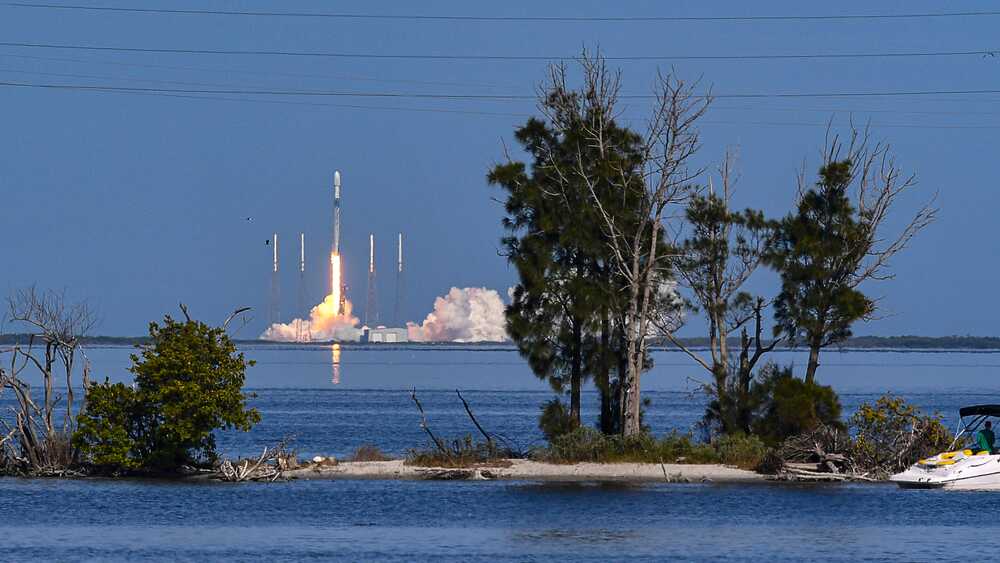Several nations are sending spacecraft to explore Mars this year. Other projects include efforts to test new space vehicles, explore asteroids and put the Webb Space Telescope into orbit.





Spiral galaxies are one of the most commonly known types of galaxy. Most people think of them as large round disks, and know that our Milky Way is counted among their number. What most people don’t realize is that many spiral galaxies have a type of warping effect that, when you look at them edge on, can make it seem like they are forming a wave. Now scientists, led by Xinlun Chen at the University of Virginia, have studied millions of stars in the Milky Way and begun to develop a picture of a “wave” passing through our own galaxy.
Since humans are not currently able to view the Milky Way in an edge-on orientation, they must resort to more brute force methods to develop models about the what, if any, wave our galaxy has. Luckily, scientists now have the tools to do so, in the form of the Sloan Digital Sky Survey and ESA’s Gaia satellite.
The method the team used was to try to identify and track the motions of as many stars as possible. To do this, they used the Apache Point Observatory Galactic Evolution Experiment (APOGEE) spectrograph, which is part of the SDSS. This preliminary data allowed them to look at both the chemical compositions as well as the motions of hundreds of thousands of stars. While this motion data was helpful in starting to form the picture of the Milky Way’s wave, it was not sufficient to complete it.


Bernie Sanders on Mars: It’s really cold here! 🎬 360VR video 8K: 🔎 360VR photo 8K: https://www.360cities.net/image/bernie-sanders-on-mars #BernieSanders #BernieMeme #BernieSandersmemes #BernieSandersMittens #inauguration2021

More than 150000 volunteers around the world are helping NASA explore the universe—and you could be one of them! Citizen scientists are helping astronomers map out nearby stars, but that’s only one of the many NASA Citizen Science projects available to the public. Take a look:
Is our solar system located in a typical Milky Way neighborhood? Scientists have gotten closer to answering this question.

Blue jets have been observed from the ground and aircraft for years, but it’s hard to tell how they form without getting high above the clouds. Now, instruments on the International Space Station have spotted a blue jet emerge from an extremely brief, bright burst of electricity near the top of a thundercloud, researchers report online January 20 in Nature.
Understanding blue jets and other upper-atmosphere phenomena related to thunderstorms, such as sprites (SN: 6/14/02) and elves (SN: 12/23/95), is important because these events can affect how radio waves travel through the air — potentially impacting communication technologies, says Penn State space physicist Victor Pasko, who was not involved in the work.
Cameras and light-sensing instruments called photometers on the space station observed the blue jet in a storm over the Pacific Ocean, near the island of Nauru, in February 2019. “The whole thing starts with what I think of as a blue bang,” says Torsten Neubert, an atmospheric physicist at the Technical University of Denmark in Kongens Lyngby. That “blue bang” was a 10-microsecond flash of bright blue light near the top of the cloud, about 16 kilometers high. From that flashpoint, a blue jet shot up into the stratosphere, climbing as high as about 52 kilometers over several hundred milliseconds.

Scientists from the International Centre for Radio Astronomy Research (ICRAR) and the University of Western Australia (UWA) have set a world record for the most stable transmission of a laser signal through the atmosphere.
In a study published today in the journal Nature Communications, Australian researchers teamed up with researchers from the French National Centre for Space Studies (CNES) and the French metrology lab Systèmes de Référence Temps-Espace (SYRTE) at Paris Observatory.
The team set the world record for the most stable laser transmission by combining the Aussies’ phase stabilization technology with advanced self-guiding optical terminals. Together, these technologies allowed laser signals to be sent from one point to another without interference from the atmosphere.

Update (8:15 p.m. Thursday): SpaceX is now targeting no earlier than 9:40 a.m. Saturday, Jan. 23, for this launch. This also means weather odds decline from 80% “go” to 60% “go.”
SpaceX teams at Cape Canaveral Space Force Station are set for the company’s next launch on Friday, a unique mission that will hug the Florida coast as it flies a southern trajectory.
If everything goes as planned, a previously flown Falcon 9 will vault off Launch Complex 40 at 9:24 a.m. and turn southeast, placing its mission on a sun-synchronous – or nearly polar – trajectory. Friday’s launch window will remain open for about an hour.